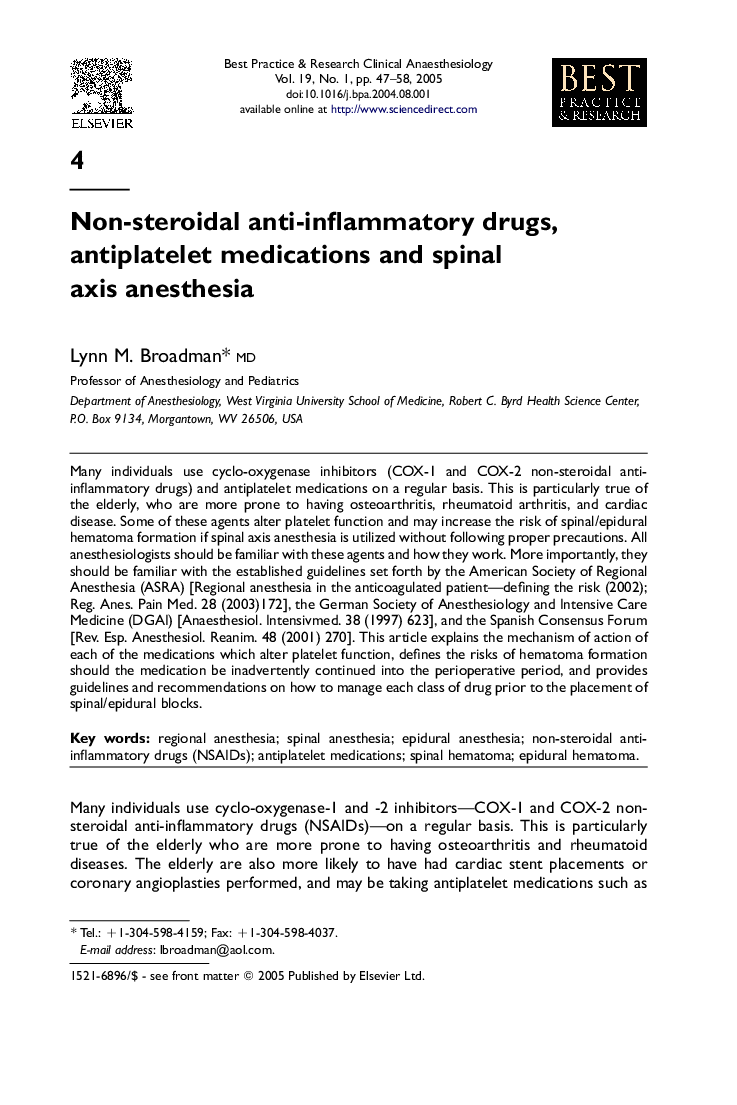| Article ID | Journal | Published Year | Pages | File Type |
|---|---|---|---|---|
| 9092625 | Best Practice & Research Clinical Anaesthesiology | 2005 | 12 Pages |
Abstract
Many individuals use cyclo-oxygenase inhibitors (COX-1 and COX-2 non-steroidal anti-inflammatory drugs) and antiplatelet medications on a regular basis. This is particularly true of the elderly, who are more prone to having osteoarthritis, rheumatoid arthritis, and cardiac disease. Some of these agents alter platelet function and may increase the risk of spinal/epidural hematoma formation if spinal axis anesthesia is utilized without following proper precautions. All anesthesiologists should be familiar with these agents and how they work. More importantly, they should be familiar with the established guidelines set forth by the American Society of Regional Anesthesia (ASRA) [Regional anesthesia in the anticoagulated patient-defining the risk (2002); Reg. Anes. Pain Med. 28 (2003)172], the German Society of Anesthesiology and Intensive Care Medicine (DGAI) [Anaesthesiol. Intensivmed. 38 (1997) 623], and the Spanish Consensus Forum [Rev. Esp. Anesthesiol. Reanim. 48 (2001) 270]. This article explains the mechanism of action of each of the medications which alter platelet function, defines the risks of hematoma formation should the medication be inadvertently continued into the perioperative period, and provides guidelines and recommendations on how to manage each class of drug prior to the placement of spinal/epidural blocks.
Keywords
Related Topics
Health Sciences
Medicine and Dentistry
Anesthesiology and Pain Medicine
Authors
Lynn M. (Professor of Anesthesiology and Pediatrics),
